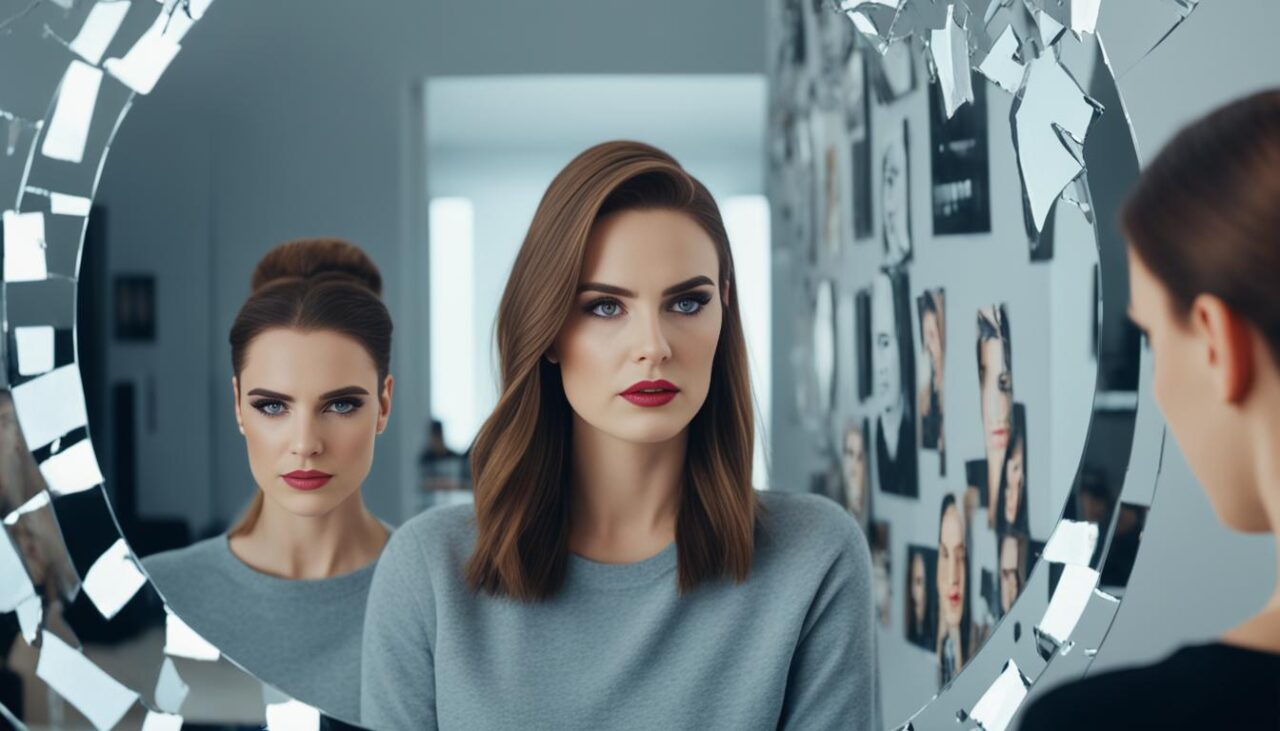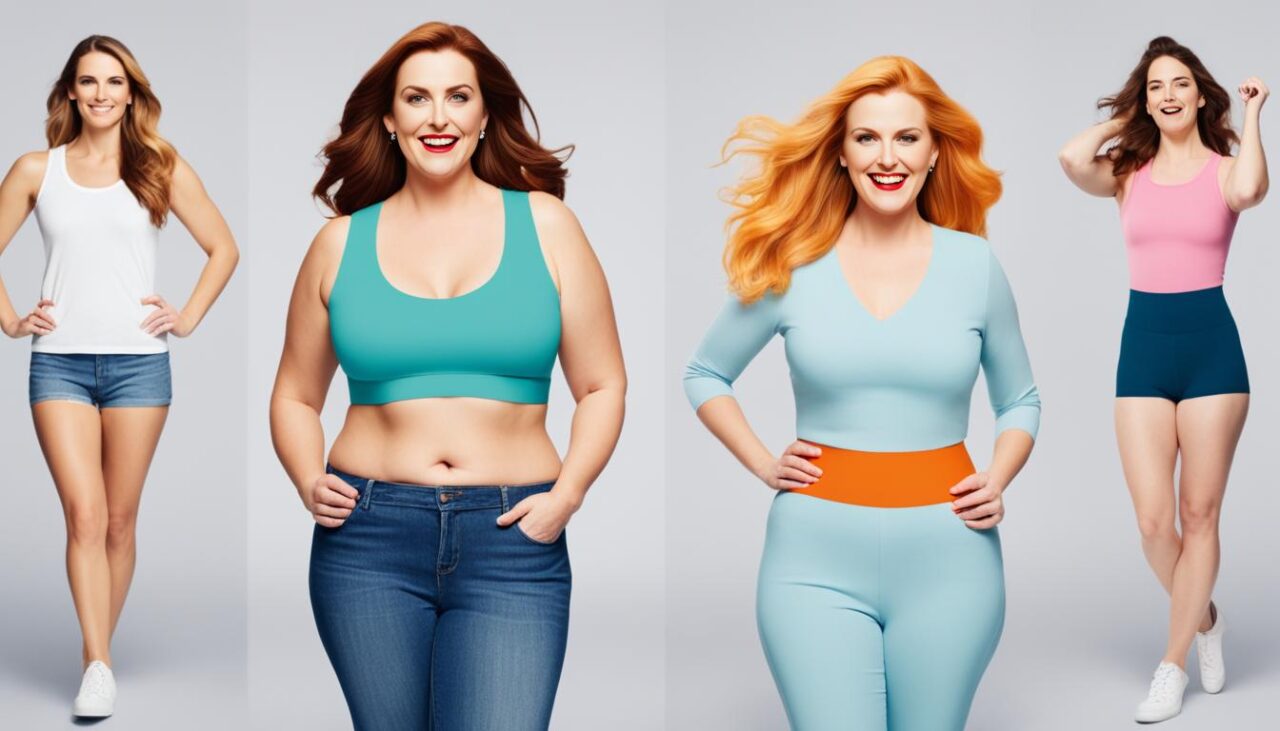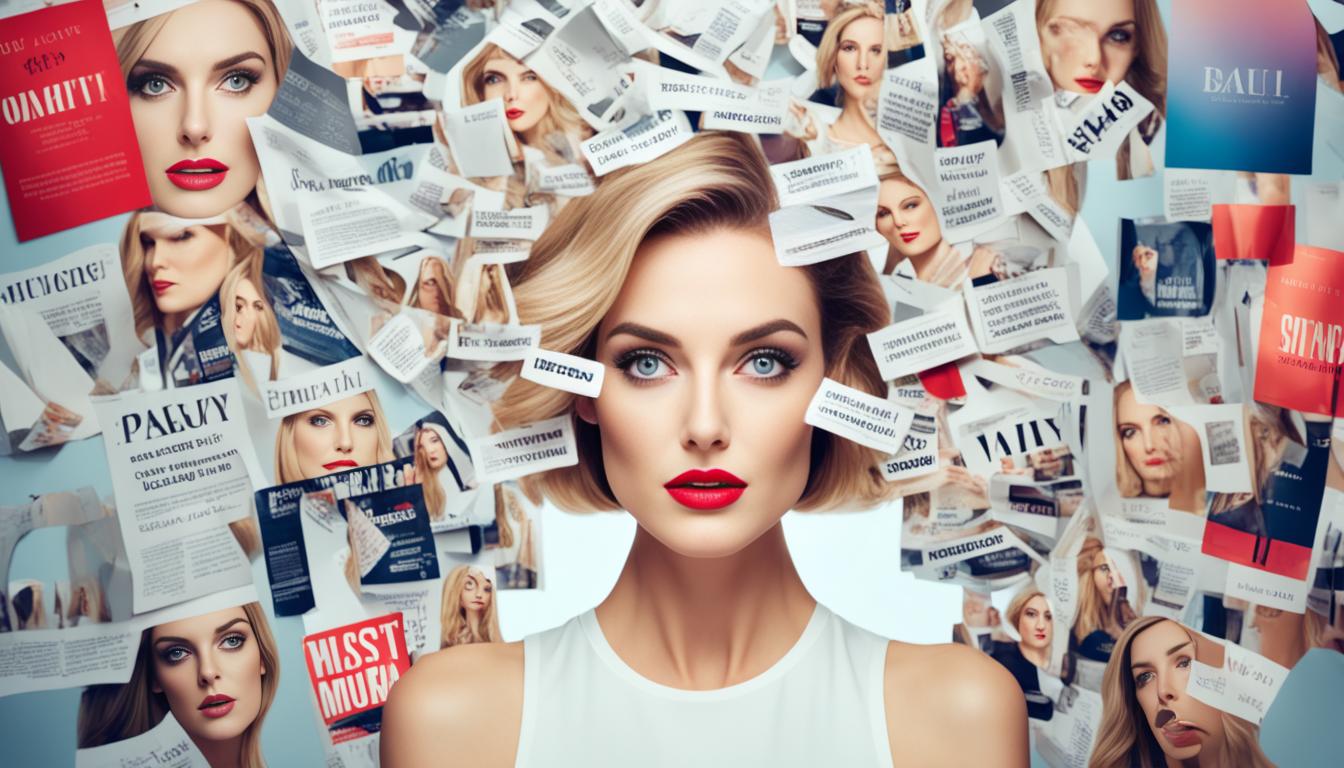The pursuit of physical perfection is an inescapable consequence of modern media consumption, where unrealistic beauty standards relentlessly bombard viewers. With a myriad of idealized images pervasive across platforms, the resultant beauty pressure can lead to significant negative effects on self-perception. By dissecting the psychological studies available on media influence and body image, examining social commentary on the origins of these beauty standards, and considering personal accounts of the impact on self-image, we can begin to unravel the complicated relationship between media representations and individual self-worth.
- 1 Key Takeaways
- 2 Understanding Beauty Standards in Modern Media
- 3 Psychological Impact of Unrealistic Expectations
- 4 Analysis of Media's Unrealistic Beauty Standards
- 5 Real Consequences: Body Image and Self-Esteem Issues
- 6 Exploring Media Criticism and Advocacy for Change
- 7 The Role of Social Media in Promoting Beauty Myths
- 8 Conclusion
Key Takeaways
- Unrealistic beauty standards in media can exert constant beauty pressure on consumers.
- Such pressures have tangible negative effects, skewing self-perception and well-being.
- Understanding the origins and perpetuation of these standards is critical to addressing their prevalence.
- Personal accounts underscore the real-world consequences of unrealistic beauty portrayals.
- Efforts to alter media narratives around beauty are essential in fostering healthier self-images.
Understanding Beauty Standards in Modern Media
As we advance in the 21st century, the omnipresence of media continues to define and dictate cultural beauty perceptions. In this landscape, media criticism highlights the growing disparities between authentic diversity and the singular beauty ideals often portrayed. To decipher how these standards have evolved to what they are today, it's essential to peer back through history and examine the varied influences driving these perceptions.
The Evolution of Beauty Ideals Over Time
Beauty ideals are not static; they have transformed enormously throughout history, often reflecting broader societal values and norms. Historical analysis reveals a fascinating shift from the voluptuous figures admired during the Renaissance to the waifish silhouettes idolized in the fashion world of the 1960s. Technology, economics, politics, and even health have historically played roles in shaping these preferences, which continuously redefine the concept of beauty within different eras.
Media's Role in Shaping Beauty Perceptions
In the modern era, the proliferation of media outlets has placed beauty standards in the limelight, reinforcing specific ideals through repetitive exposure. Studies have shown how platforms ranging from glossy magazine covers to social media feeds curate and convey images of beauty that are often beyond the reach of everyday reality. This media representation fosters a skewed perception of beauty, leading to an increase in body dissatisfaction among consumers who are bombarded with these unattainable standards.
Comparing Global Beauty Standards
Cultural beauty perceptions are not homogenous, and a cross-cultural examination reveals a tapestry of aesthetic values and practices that fluctuate widely from one culture to another. For instance, the celebration of fair skin in some Asian cultures contrasts sharply with the sun-kissed glow coveted in Western societies. Recognizing this diversity is crucial in understanding the complexity and range of global beauty standards and the socio-cultural dynamics they entail.
Decoding beauty ideals is more than an academic exercise; it's an ongoing critique of the power differentials and influences that shape our perceptions and lived experiences. As we continue to analyze this subject, it is imperative to approach media with a discerning eye and advocate for representations that celebrate a spectrum of beauty definitions reflective of the real world's diversity.
Psychological Impact of Unrealistic Expectations
The pursuit of beauty is a long-standing human endeavor, yet the explosion of media platforms has drastically amplified the visibility of unrealistic expectations. As a consequence, the psychological well-being of numerous individuals is affected, with mental health concerns such as body dissatisfaction becoming increasingly prevalent. In understanding these dynamics, it's critical to assess not only the effects but also the coping strategies people employ to maintain their mental equilibrium in the face of these pervasive pressures.

Body Dissatisfaction and its Mental Repercussions
The incessant exposure to idealized, and often digitally enhanced, images has been directly linked with feelings of inadequacy and body discontent. Psychological studies assert that the more individuals consume media portrayals of perfection, the more they internalize these standards as benchmarks for self-worth, leading to a host of mental repercussions including low self-esteem, eating disorders, and depression.
The Link Between Self-Perception and Beauty Portrayals
The correlation between self-perception and media representations of beauty cannot be overstated. When surveying the landscape of societal expectations, it's clear that self-image is often shaped by the external cues provided by media platforms. This tethering of identity to an unattainable aesthetic contributes to a distorted view of one's own beauty and value, fostering a cycle of comparison and dissatisfaction.
Coping Mechanisms for Beauty Pressure
In facing the relentless tide of beauty pressure, individuals are finding ways to adapt and counteract the negative impact. Research points to a range of effective strategies, including critical media consumption, engaging in supportive communities, and practicing self-compassion. By adopting these adaptive methods, people can bolster their resilience against the onslaught of impractical beauty paradigms and forge a path towards healthier self-recognition and acceptance.
Analysis of Media's Unrealistic Beauty Standards
The influence of media representation on public perception cannot be overstated, particularly when it comes to beauty myths that shape societal norms. Through a rigorous examination of media studies, it has been consistently found that idealized and often unattainable portrayals of beauty contribute to body dissatisfaction and generate unrealistic expectations among audiences. The carefully curated images of perfection seen in advertising, film, and social media represent a narrow and flawed standard that most individuals cannot naturally or healthily achieve.
Media's penchant for showcasing such rigid beauty standards may be rooted in the industry's motivations to captivate audiences and maximize engagement. Unfortunately, this ceaseless bombardment of polished images fuels the myths surrounding what is considered physically attractive and, by extension, socially acceptable.
“The prevalence of impeccably retouched models across media platforms does not merely reflect aesthetic preferences but actively molds them, steering public opinion towards an ever-narrowing ideal of beauty.”
Furthermore, sociological insights have revealed the far-reaching consequences of these beauty myths. They not only generate a sense of inadequacy among consumers but can also lead to serious mental health issues, including low self-esteem and eating disorders. A diverse range of expert opinions, from psychologists to fashion editors, evoke a common theme—the pressing need for more authentic and inclusive media representation to resist the tide of unrealistic beauty narratives.
A shift towards a more genuine portrayal of human bodies in media could dismantle harmful beauty expectations. By celebrating diversity and promoting a culture that values individual uniqueness, the potential benefits include a healthier societal outlook on body image and an increase in personal confidence among consumers. The implications of such a transformative approach in media representations are both profound and liberating, as they can lead to a more accepting and realistic set of standards that empower rather than diminish individual self-worth.
Real Consequences: Body Image and Self-Esteem Issues
The quest for body satisfaction and the struggle against the unrealistic standards of beauty take a substantial toll on individuals across various demographics. In this candid exploration, we delve into the demographic impact and discuss the need for more authentic representation in the media to combat these pervasive issues.
Statistics on Body Image Concerns Among Different Demographics
Data collected from psychological research sheds light on a disconcerting trend: body image concerns are widespread and affect people of all ages, genders, and ethnic backgrounds. These statistics reveal a profound and disturbing inequality in body satisfaction, pinpointing a stark demographic impact. For example, surveys have shown that a significant percentage of women, as well as a growing number of men, express dissatisfaction with their body image, leading to harmful mental health outcomes.

Real-Life Stories: The Personal Toll of Beauty Standards
Raw and poignant, personal testimonies provide a window into the lives of those grappling with the pressures of beauty standards. “It's like chasing a phantom,” shares one interviewee, as they discuss the relentless pursuit of an unattainable ideal. These narratives underscore not only the mental and emotional toll but also highlight the immense value of promoting authentic representation in our cultural imagery.
The Vicious Cycle of Comparing Ourselves to Airbrushed Images
In an era where digitally altered images are the norm rather than the exception, individuals are caught in a vicious cycle of self-comparison with these airbrushed ideals. The ongoing exposure to such manipulations fuels discontent and erodes self-esteem, creating an urgency for media platforms to champion more authentic and diverse portrayals of beauty. The psychological effects of this comparison culture are far-reaching and necessitate a new paradigm in media representation—one that fosters body positivity and authenticity above all.
As society marches towards an understanding of the value of every individual's unique beauty, we must continue shedding light on the real-life effects of the media's portrayal of body image, and work collectively to instigate meaningful change.
Exploring Media Criticism and Advocacy for Change
As the voices of media criticism grow louder, the examination of unrealistic beauty standards broadcasted across various platforms has spurred a significant cultural discourse. This dialogue encompasses the pervasive effects these ideals have on individual self-esteem and societal norms as a whole. Scrutiny is not only directed at the content itself but also at the underlying systems that perpetuate these often unattainable images.
Advocates are calling not simply for recognition of the issue but for actionable advocacy for change. For instance, the Body Positive movement has gained momentum, emboldening individuals to embrace diversity in shape, size, and appearance. This movement symbolizes a broader cultural shift that demands authenticity and a more inclusive definition of beauty from the media. The course of action extends beyond mere criticism, as it encapsulates the principle that each person's body is an embodiment of beauty in its unique form.
“We're not just up against an image; we're up against an entire industry that profits from convincing us that being ‘less' in weight equates to more in value” — Susan, Body Positivity Advocate.
Brands, celebrities, and social influencers have become pivotal in challenging these traditional narratives. With their large platforms and influence, they are uniquely positioned to enact change. By consciously diversifying their representation and partnering with campaigns that highlight the harms of edited and manipulated images, they advocate for authenticity. In doing so, these change-makers are disrupting the notion of a singular beauty ideal and reconstructing a multifaceted understanding of beauty.
Key players in both the cosmetic and fashion industries are beginning to recognize the implications of their influence. Companies like Dove, with their Real Beauty campaign, and Aerie, by promoting untouched photos, provide prime examples of how brands can pivot towards empowering and realistic portrayals of beauty that resonate more profoundly with their audience. These organizations are not only reacting to consumer demands but are shaping the landscape of media by fostering an environment where diversity is celebrated and unrealistic beauty standards are questioned.
The urgency for systemic change has also birthed collaborations and projects that highlight how inclusive beauty narratives contribute positively to individual self-perception and societal health. For example, the SeeHer initiative aims to achieve accurate portrayals of women across the media landscape by 2020. Their mission is to ensure that women and girls see themselves reflected as they truly are, uncolored by gender bias.
Change is indeed visible, from grassroots activism to corporate initiatives. Despite the daunting presence of unrealistic beauty standards, the heightened media criticism, advocacy work, and collective push for change suggest a sea change. It's a burgeoning effort that reflects a fundamental desire for a media space that champions inclusivity and offers a more accepting notion of beauty to future generations.
The Role of Social Media in Promoting Beauty Myths
In an age where social media influence is omnipresent, the narratives and beauty myths crafted within these digital realms have a profound impact on millions globally. Platforms have not only become showcases for idealized standards of beauty but marketplaces where self-worth is often measured against likes and shares. Beneath the glamorous facades, these myths are meticulously manufactured and perpetuated, silently shaping societal perceptions of beauty.
From Influencers to Photo Filters: Unpacking Online Presentations
The allure of social media is undeniable, with influencers leading the vanguard in setting precarious beauty norms. Through expertly edited images that leverage sophisticated photo filters, these trendsetters curate visions of perfection that are often far removed from reality, contributing to the persistence of harmful beauty myths. Such curated presences on platforms like Instagram exert considerable pressure on individuals to emulate these often-unattainable looks, skewing self-perception in the process.
The Hashtag Movement: Challenging Beauty Norms on Social Platforms
However, there is a silver lining to this pervasive social media influence. Hashtag activism has emerged as a countercurrent within these very platforms, using viral hashtags to challenge and redefine conventional beauty ideals. Campaigns like #NoMakeupSelfie and #BodyPositivity have not only sparked global conversations but also encouraged inclusivity and the dismantling of beauty myths. These movements leverage the power of collective voices to advocate for a broader definition of beauty that transcends traditional barriers.
The Dark Side of ‘Likes': Validation Through Appearance
Yet, we cannot overlook the darker aspects of this social media landscape. The incessant quest for validation through online appearance can have deleterious effects on individuals' mental health. The number of ‘likes' received on a post is often misconstrued as a measure of personal worth, instigating a cycle of comparison and discontent. This underscores the need for a critical examination of the psychological ramifications of beauty standards magnified by the prism of social media.
While platforms continue to evolve, the dialogue around social media influence, beauty myths, and hashtag activism remains a vital discourse, necessary for fostering a society that values authenticity and self-acceptance above aesthetic conformity.
Conclusion
In light of the discussions presented throughout this article, there emerges a unanimous call for the transformation of media's portrayal of beauty. The prevailing narratives have long been narrow and exclusionary, but the tides are shifting toward a landscape rich in body positivity and diversity. This change is not merely cosmetic; it's a cultural imperative that aims to nurture a healthy self-image among consumers and redefine what it means to be beautiful in a multifaceted world. Acknowledging the broad spectrum of human beauty stands not just as a moral stance but as a necessity for mental wellbeing and social progress.
Encouraging Body Positivity and Diversity in Media Representation
Advocacy and psychological perspectives underscore the importance of promoting body positivity in media—an avenue that holds vast influence over individual and societal definitions of beauty. Transformation in this domain is already underway, reflected in the initiatives by brands who are boldly showcasing a more inclusive beauty standard. These efforts are crucial to dismantle the hegemony of harmful beauty ideals and to affirm the value and attractiveness of diverse body types and features.
Strategies for Mitigating the Influence of Unhealthy Beauty Standards
To further the cause, strategic approaches are required—ranging from educational programs designed to foster media literacy to targeted campaigns that confront and deconstruct unrealistic beauty standards. By empowering individuals to critically engage with media content and recognize the artifice often at play, there can be a significant decrease in the harmful impact these outmoded standards have on one's sense of self-worth.
Moving Forward: Embracing Inclusivity in Beauty Narratives
Looking ahead, the goal is a media environment that authentically mirrors the diversity of its audience. It's a future where all individuals see themselves represented and can derive confidence from that visibility. Such an evolution not only enriches the tapestry of our shared cultural narratives but also bolsters the collective health of our society. Inclusivity isn't just a trend—it's the cornerstone of an ethical framework that champions a healthy self-image for everyone. Together, we can forge a new narrative, one where every person can thrive without the pressure of conforming to narrow and unrealistic standards of beauty.
Contents
- 1 Understanding Beauty Standards in Modern Media
- 2 Psychological Impact of Unrealistic Expectations
- 3 Analysis of Media's Unrealistic Beauty Standards
- 4 Real Consequences: Body Image and Self-Esteem Issues
- 5 Exploring Media Criticism and Advocacy for Change
- 6 The Role of Social Media in Promoting Beauty Myths
- 7 Conclusion

